Perfect Paleo Biscuits
Paleo biscuits… an oxymoron? Not so fast…
Biscuits today are not the biscuits that were enjoyed centuries ago, or even the “biscuit” that many in the United Kingdom may think of.
Living in North America, most of us know the biscuit to be a fluffy, golden-crowned mound of goodness that is perfect on its own… spread with butter or jam… or a ladle of gravy.
However, the biscuit evolved over time from a long journey’s snack…
A Biscuit a Day? The Strange History of the Biscuit
Early Egyptian and Roman explorers believed that a biscuit a day would benefit their health. They were also easily transportable and ready to eat when the availability of food wavered on a long journey. So they would bake these hard cookies by the dozens before setting off.
We now know that the beloved biscuit is not the best idea for optimal health. Today’s typical adaptation of the ancient sustenance is built from a trifecta of health-harming ingredients: white flour, vegetable shortening, and milk.
Trans Fats + Refined Flour = A Biscuit Recipe for Poor Health
Whether from a Pillsbury pop can, or baked from scratch and served with an order of eggs and bacon, even the most seemingly-healthy, homemade biscuit can spell trouble.
And one key reason is trans fats.
Soybean oil (or partially hydrogenated soybean oil) is a ubiquitious ingredient in pre-made biscuits like Pillsbury Grands® and biscuit mixes like Bisquick®.
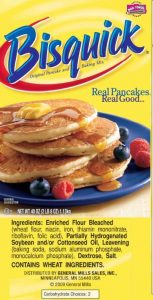
And while trans fat might make our pie crusts and biscuits flaky, and result in longer shelf life, these “franken fats” are toxic to every cell in the human body, negatively impacting everything from proper metabolism and fertility… to cellular, cardiovascular and liver health (to name a few).
And the refined flour isn’t much better.
Consuming refined carbohydrates – like the white flour that predominately comprises a biscuit – is a sure-fire way to spike blood sugar levels and encourage insulin resistance. Over time, this can lead to diabetes, heart disease and other chronic conditions.
Worse still is the inflammatory cascade that can ensue when indulging in high-glycemic, grain-based foods. Inflammation is known as the “silent killer” and is now accepted as a cornerstone for every chronic disease.
Keeping blood sugar levels stable and inflammation tamped down are two keys to a long, healthy, disease-free life.
But with their distinctive, buttery layers of fluffy, yet crisp bites, our beloved biscuit is so hard to pass up! That’s why we set out to recreate this classic using intelligent ingredients that taste and bake like just the classic (If you enjoy the recipe below – you’ll love my Keto Baking Bundle with more than 100 delicious low-carb, grain-free and Keto breads & Desserts).
Introducing… Low-Impact, Authentic-Tasting Paleo Biscuits
In order to mimic the breakfast treat so many of us love, we knew we’d first need to achieve the perfect proportions of Paleo-friendly flours.
With some trial and error, we struck the perfect balance of almond, coconut, and arrowroot flour to create a biscuit that is hearty enough for a sandwich… yet still flaky like the classic.
Better yet, our balanced flour blend keeps the carb count to a low 13 grams per generous biscuit, ensuring that your blood sugar stays stable.
Now, onto the other key players: milk and butter.
Since biscuits scream butter (as they should!), we turned to superfood grass-fed butter with pasture raised eggs and coconut milk for a nutrient rich, creamy biscuit blend. Between the powerful fat-burning medium chain triglycerides (MCTs) from coconut milk and vitamin K2 from butter, you’ve got a better-for-you biscuit that rivals the Southerners’ go-to.

This batch is quick to come together and will bake up like the dozen you’re used to pulling apart before the big breakfast is served. Between the crisp outside and pillowy interior, I think you’ll find these Paleo biscuits perfect for any savory or sweet topping.
With half the carbs (and none of the grain!), you can welcome back your old favorite recipes like biscuits and gravy, or try something new, like a biscuit-topped Paleo-Chicken Casserole.
Wake up and smell the Paleo biscuits!
Original
Prep Time
10 mins
Cook Time
14 mins
Total Time
24 mins
Servings
8
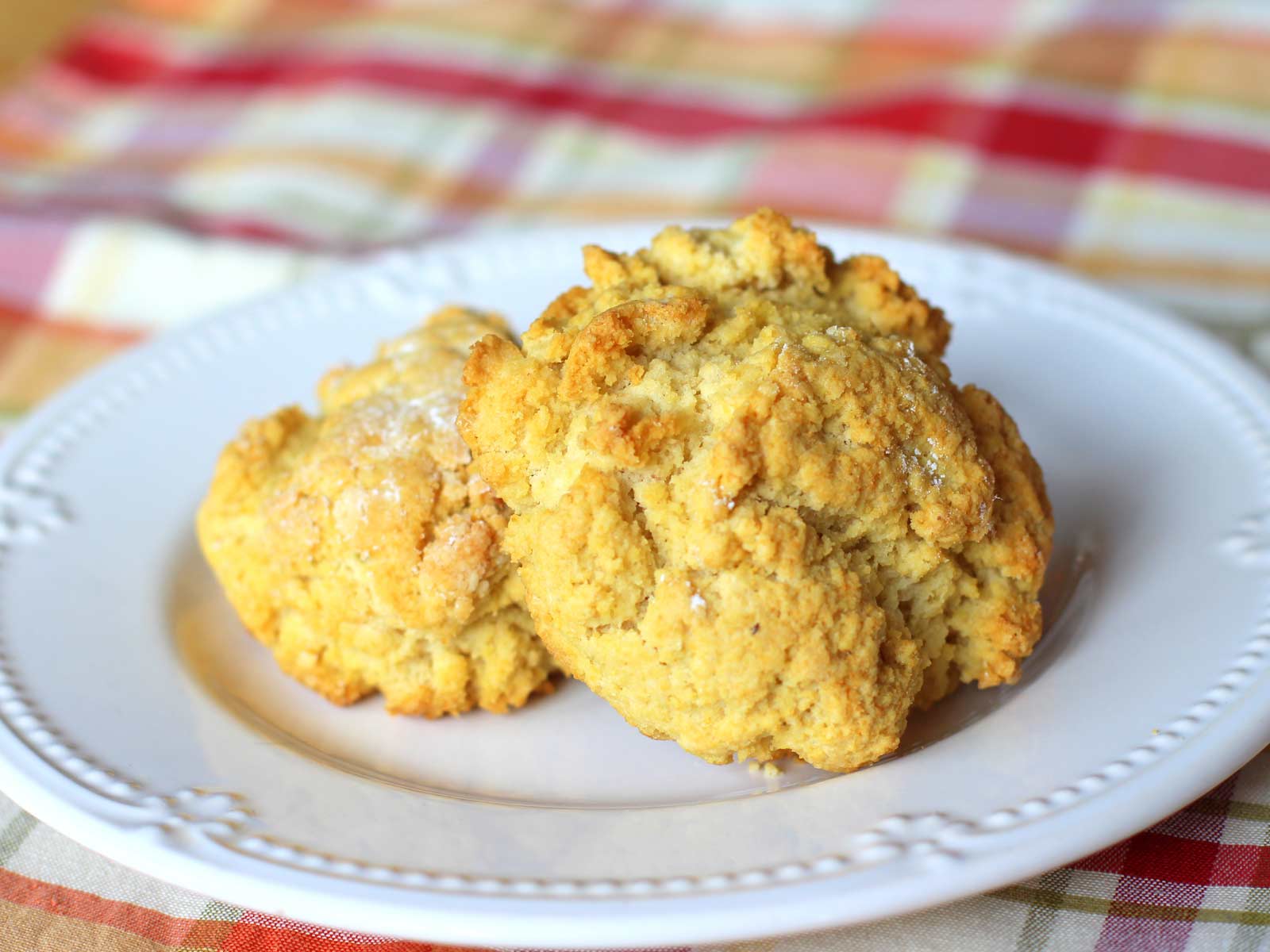
Ingredients
Dry Ingredients
- 1 cup almond flour
- ⅔ cup arrowroot flour (plus more for dusting)
- ½ cup coconut flour
- 1 ½ tsp. baking soda
- 2 tsp. cream of tartar
- ¾ tsp. sea salt
Wet Ingredients
- 5 Tbsp. Kerrygold Butter or Virgin Coconut Oil (cold)
- ½ cup full-fat coconut milk
- 2 tsp. lemon juice
- 2 pastured eggs
Instructions
- Preheat oven to 400 F. Line a baking sheet with unbleached parchment paper.
- In a medium bowl, whisk together the almond flour, arrowroot flour, coconut flour, baking soda, cream of tartar and sea salt.
- Cut the butter or coconut oil up into chunks. Add it to the dry ingredients, cutting in using your fingers or a pastry blender to form a coarse meal.
- In a small bowl, whisk together the coconut milk and lemon juice. Add the eggs and whisk to combine.
- Make a small well in the flour mixture. Pour the liquid ingredients into the dry ingredients, mixing gently using a rubber spatula.
- The mixture will be a bit wet. Let it stand for 2-3 minutes to allow moisture to absorb.
- Use an ice cream scoop or a quarter cup measuring cup to scoop the biscuit dough. Dip the scoop or cup into a bit of arrowroot to coat, then scoop the dough.
- Invert the dough onto the lined baking sheet, leaving 2 inches of space between biscuits.
- Bake 14-16 minutes or until golden brown.
- Cool on a wire rack and serve.
Nutrition & Macronutrient Ratio
Nutrition Information Per Serving (1 Paleo Biscuit)
232 calories, 18 g fat, 9 g saturated fat, 6 g monounsaturated fat, 2 g polyunsaturated fat, 72 mg cholesterol, 13 g carbohydrate, 1 g sugar, 4 g fiber, 5 g protein, 437 mg sodium, 215 mg potassium
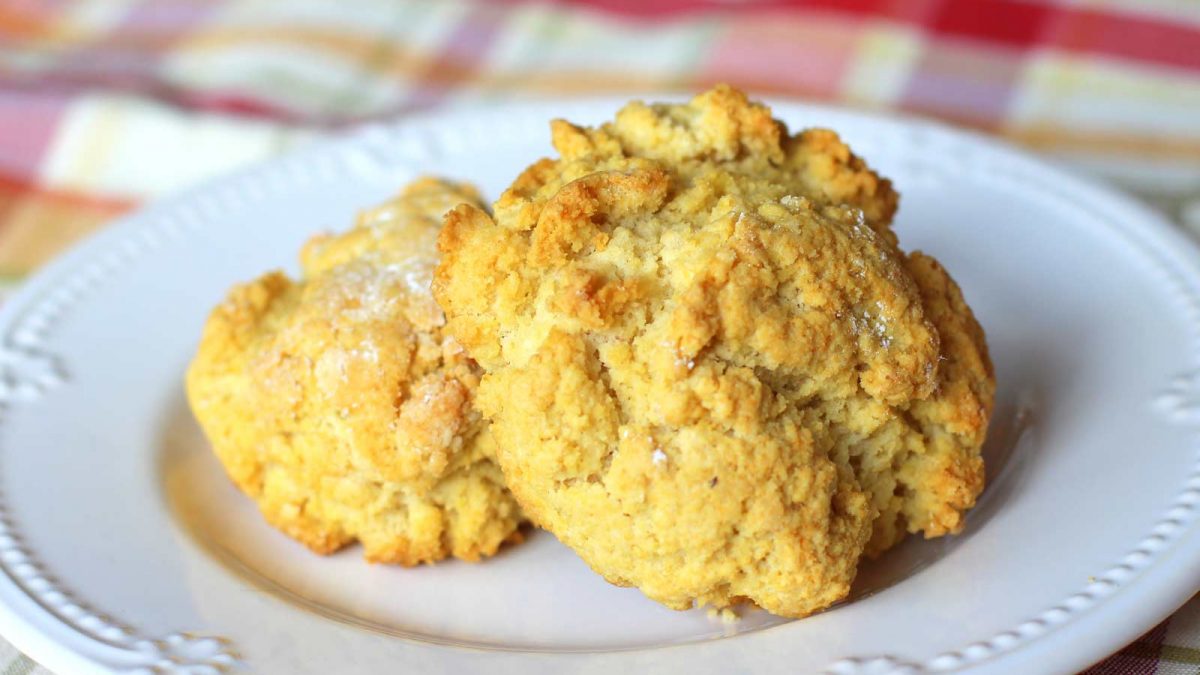


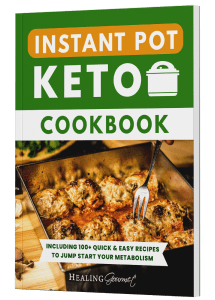
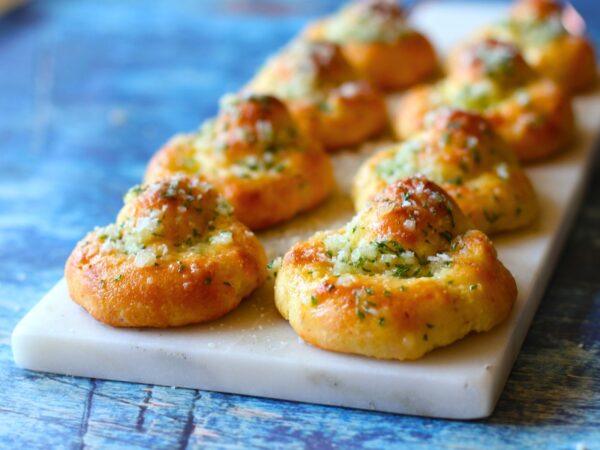

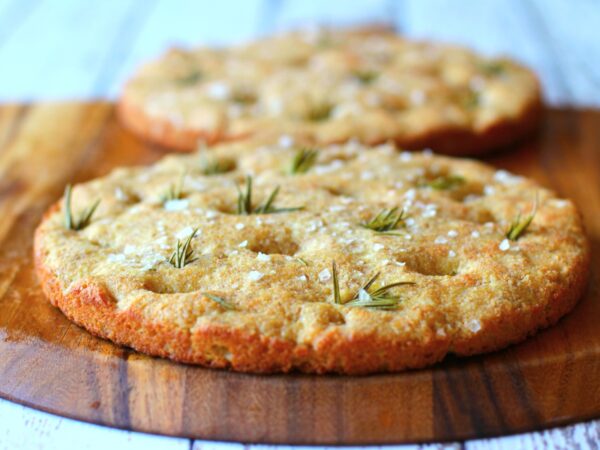
Hi Kelley. I NEVER reply to any of these but I so love your site. Thank you so much for the many FREE recipes. That is very kind of you. God bless you in your quest for health and nourishment.
Hi Sheila,
I am so touched by your comment and so happy to hear that you enjoy my recipes! Thank you for taking the time to send a note. Wishing you the very best health & a heart full of happiness.
Be Well,
Kelley
Hi Kelley,
I am a fan of yours and eagerly wait your recipes. Keep one of your packages on hand. Have allergies and have cut out all allergen foods for now. This includes egg whites. Can you recommend a substitute for your yummy biscuits and other recipes that call for eggs?
Thank you!
Hi Peggy!
I’m so happy to hear that you like our recipes. And I certainly understand the quandary with eggs. In fact, more and more folks (including those with Hashimoto’s) are learning they are intolerant to eggs. So much so that I’ve heard eggs being called “the new gluten”.
Over the last couple years I have been working more and more on recipes and product formulations that do not require eggs, for this reason. For example, our Paleo Pizza Crust Mix, all of our Cookie Mixes at Wellness Bakeries now have an egg-free option, and our Crusty Boule has always been egg-free. We will also be releasing a Paleo French Bread Mix that has an egg free option too (which I like even better than the version with eggs!).
With this said, it can be a challenge to replicate the properties that eggs provide in baking. The flax “egg” and the chia “egg” are two old standbys I like to use. I also really love the gelatin “egg” – which is what I found worked best for the French Bread formula I created. I think this could work for the biscuits, although I have not yet tried it. Here’s how to make one gelatin “egg”: Add 1 Tbsp. grass-fed gelatin to 3 Tbsp. hot water. Whisk together until gelatin dissolves, let stand 2 minutes, then add to the recipe. If you want to try this with the biscuits, you’ll need to double it, as it calls for 2 eggs. And if you do, we’d love to hear how it turns out!
Be Well,
Kelley
Hi Peggy!
I’m so happy to hear that you like our recipes. And I certainly understand the quandary with eggs. In fact, more and more folks (including those with Hashimoto’s) are learning they are intolerant to eggs. So much so that I’ve heard eggs being called “the new gluten”.
Over the last couple years I have been working more and more on recipes and product formulations that do not require eggs, for this reason. For example, our Paleo Pizza Crust Mix, all of our Cookie Mixes at Wellness Bakeries now have an egg-free option, and our Crusty Boule has always been egg-free. We will also be releasing a Paleo French Bread Mix that has an egg free option too (which I like even better than the version with eggs!).
With this said, it can be a challenge to replicate the properties that eggs provide in baking. The flax “egg” and the chia “egg” are two old standbys I like to use. I also really love the gelatin “egg” – which is what I found worked best for the French Bread formula I created. I think this could work for the biscuits, although I have not yet tried it. Here’s how to make one gelatin “egg”: Add 1 Tbsp. grass-fed gelatin to 3 Tbsp. hot water. Whisk together until gelatin dissolves, let stand 2 minutes, then add to the recipe. If you want to try this with the biscuits, you’ll need to double it, as it calls for 2 eggs. And if you do, we’d love to hear how it turns out!
Be Well,
Kelley
Hi Peggy!
I’m so happy to hear that you like our recipes. And I certainly understand the quandary with eggs. In fact, more and more folks (including those with Hashimoto’s) are learning they are intolerant to eggs. So much so that I’ve heard eggs being called “the new gluten”.
Over the last couple years I have been working more and more on recipes and product formulations that do not require eggs, for this reason. For example, our Paleo Pizza Crust Mix, all of our Cookie Mixes at Wellness Bakeries now have an egg-free option, and our Crusty Boule has always been egg-free. We will also be releasing a Paleo French Bread Mix that has an egg free option too (which I like even better than the version with eggs!).
With this said, it can be a challenge to replicate the properties that eggs provide in baking. The flax “egg” and the chia “egg” are two old standbys I like to use. I also really love the gelatin “egg” – which is what I found worked best for the French Bread formula I created. I think this could work for the biscuits, although I have not yet tried it. Here’s how to make one gelatin “egg”: Add 1 Tbsp. grass-fed gelatin to 3 Tbsp. hot water. Whisk together until gelatin dissolves, let stand 2 minutes, then add to the recipe. If you want to try this with the biscuits, you’ll need to double it, as it calls for 2 eggs. And if you do, we’d love to hear how it turns out!
Be Well,
Kelley
Thank you Kelly! I did not have all the almond flour required so had to complete the measure with all purpose gluten free flour (1/4 cup only). They turned out perfect!!! Just as you described them!! ????
Hi Kelly,
Where can you find arrowroot flour?
Thanks,
Cathy
We tried these last weekend… with a pat of butter and a bit of strawberry jam… they were sooo good!